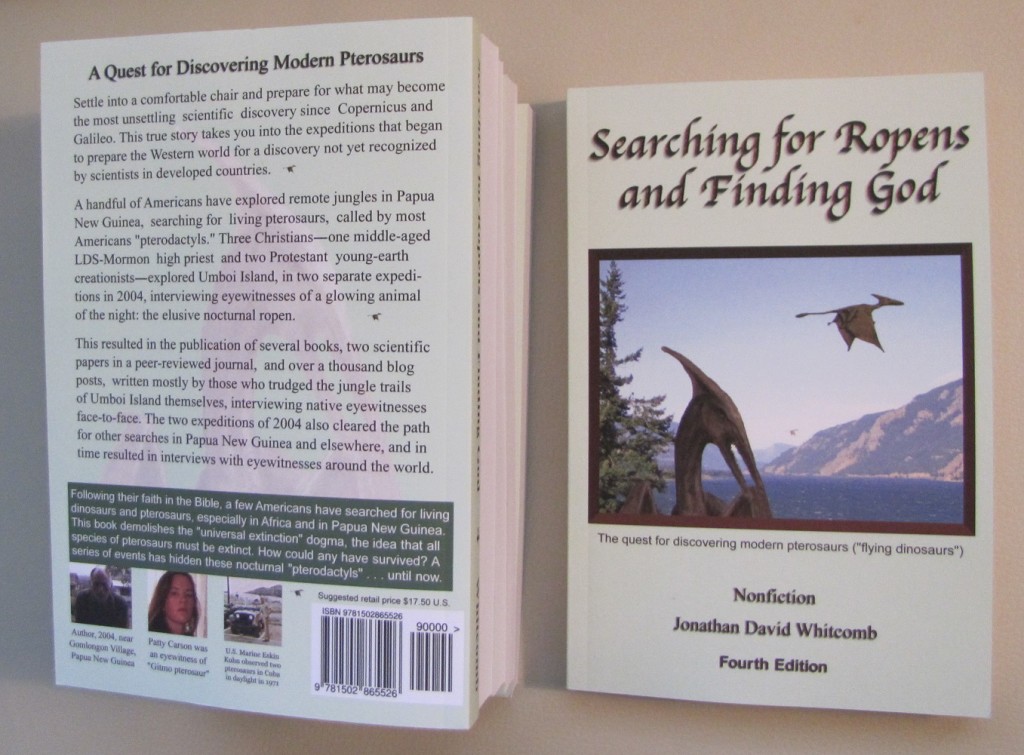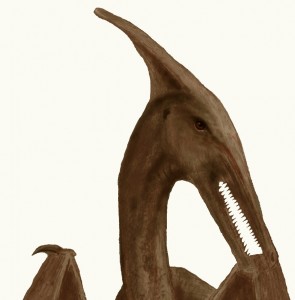A kind of unidentified flying creature has been suggested as the cause of a portion of the missing children cases, for two-year-olds who disappear in or near wilderness areas of the United States and Canada, in which no common explanation appears to make sense. These cases are not necessarily related to the ropen of Papua New Guinea, although indirect circumstantial evidence leaves the door wide open to that possibility.
The idea comes from one interpretation of some of the cases examined in the nonfiction book Missing 411 Western United States & Canada, by the investigative journalist David Paulides. I, Jonathan Whitcomb, suggest this hypothesis, not Mr. Paulides, and I take responsibility for this unidentified-flying-creature interpretation.
Two-year-olds who disappear
This pertains only to a narrow range of cases in which a small child goes missing in or near a wilderness area in North America. In the book by Paulides, 219 cases have an age for the missing person, and 21 of those are of two-year-olds. That seems to me to be a large portion—10%—for such a narrow age range, for ages of the victims go up to over seventy years old, and every age of childhood is represented.
The following show how many slightly-older children are included in the book.
- Three years old – 3.7%
- Four years old – 2.7%
- Five years old – 3.2%
- Six years old – 1.8%
Take the 219 cases in context: The book by Paulides is a compilation and analysis of the strangest cases, those in which there is no obvious sign of abduction by a human, or attack from a common predator like a bear or mountain lion, or wandering off and getting lost.
Two-year-olds are not yet old enough to put up much resistance should this most unusual kind of attacker find them. Older children can better avoid a flying predator by running faster and ducking. An older child may also be avoided by a predator, for that potential victim may be too large to carry away. This is part of the reason that so many two-year-olds go missing compared with other ages of victims.
Scratches found on two-year-olds
For those children who were found (including cases in which a body was recovered) and in which a flying predator may have been involved, six reports including observations of scratches. Five of those six involved either many scratches (four) or three deep scratches (one). Only one of those six involved very limited scratches.
Success or failure of tracking dogs
Of the six cases in which dog tracking success was indicated (for two-year-olds), two had complete success, one had limited success, and in three cases the dogs totally failed. This is one evidence for the general concept that these children did not simply wander off on their own.
Found many miles away
Perhaps the strongest indicators of strangeness is in how far away small children are found from when they went missing. For two-year-olds, the average distance is 7.2 miles. In addition, some of these children (or their bodies) are found higher in elevation, sometimes much higher. Two-year-olds just cannot hike many miles over mountain ridges and across cold mountain streams and all that through very rough terrain in a short period of time.
The obvious explanation, in a sense, is that those toddlers were carried over all those obstacles through the air, although that leaves open the big question: What kind of flying creature is carrying away children in or near wilderness areas of North America?
###
.
Missing Persons and Unidentified Flying Creatures
This pertains especially to North American, in particular to Canada and the contiguous 48 states of the USA, but it may be relevant to other areas of the planet. Please be aware that the following model is my own concept, not from the book by Mr. Paulides. . . .
Strange Cases of Missing Children
Paul Nation, in his expedition in 2006, learned that the indavas once terrorized villagers on the mainland, carrying off pigs and even children. In other parts of the mainland, large flying creatures were reported to have even carried away full-grown men, in particular near villages around the cities of Lae and Finschhafen.
Who could ask more from any organization, for the more-conventional reasons a child could go missing in or near a wilderness area? More volunteers, better-qualified and arriving at the location quicker—those make it more likely that a lost child may be found faster. I applaud the efforts of all those who have become involved in this noble effort to find missing persons.
Missing Children Found in Caves
Before getting into the missing-persons cases of Mike McDonald in Arizona and Timothy Farmer in Australia, consider other reports that tie caves to ropens (or other modern pterosaurs).
.





